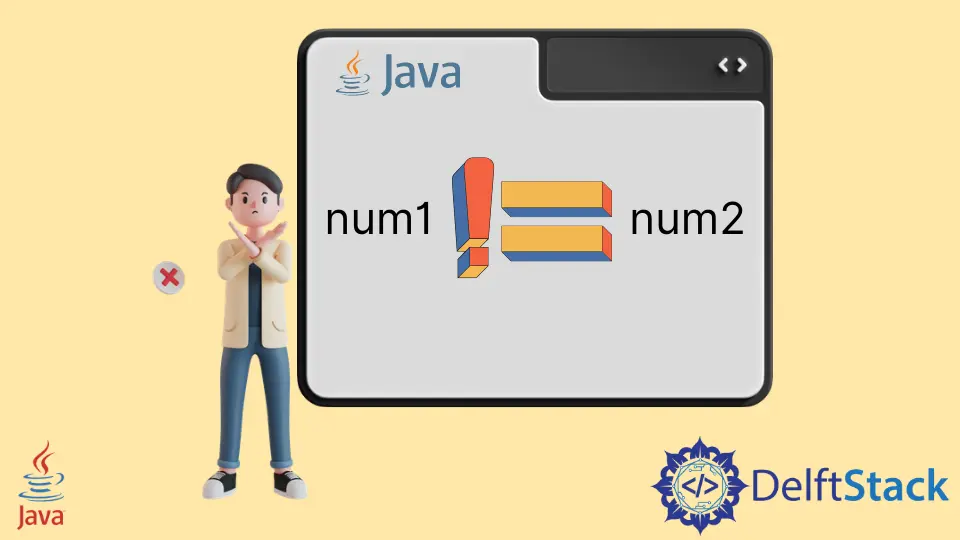Java 中的不等于运算
Rupam Yadav
2023年10月12日
Java
Java Operator

本文展示了如何使用我们也称为不等于运算符的 != 运算符。我们也可以使用!使用 equals() 方法来检查数据的不相等性。
在 Java 中使用不等于运算符
使用不等于运算符的最基本方法是检查两个变量之间的相等性。
该程序有两个 int 变量,num1 和 num2。这里,num1 包含值 123,而 num2 变量具有 321。
我们创建一个 if 条件来检查变量是否匹配。在条件中,写入 num1 != num2,比较运算符左侧的变量。变量位于运算符的右侧。
当条件不满足时(当 num1 不等于 num2 时)执行 if 条件的 true 块,如果它们匹配,则执行 false 块。
由于两个变量具有不同的值,因此条件的 true 块将执行。
示例代码:
public class JavaExample {
public static void main(String[] args) {
int num1 = 123;
int num2 = 321;
if (num1 != num2) {
System.out.println("str1 and str2 are not equal");
} else {
System.out.println("str1 and str2 are equal");
}
}
}
输出:
str1 and str2 are not equal
在 equals() 中使用不等于运算符
我们可以使用!运算符使用 equals() 方法检查变量的内容是否匹配。
在示例中,我们采用两个 String 变量。在 if 条件中,我们用!检查 str1.equals(str2) 运算符开头。
这 !运算符使结果相反,这意味着如果 str1.equals(str2) 语句返回 true 作为结果,运算符!使它成为错误的。
所以,在我们的例子中,我们检查 str1.equals(str2) 是否抛出 true,如果是,我们使用运算符,这证明变量不一样。
public class JavaExample {
public static void main(String[] args) {
String str1 = "String A";
String str2 = "String B";
if (!str1.equals(str2)) {
System.out.println("str1 and str2 are not equal");
} else {
System.out.println("str1 and str2 are equal");
}
}
}
输出:
str1 and str2 are not equal
Enjoying our tutorials? Subscribe to DelftStack on YouTube to support us in creating more high-quality video guides. Subscribe
作者: Rupam Yadav
Rupam Saini is an android developer, who also works sometimes as a web developer., He likes to read books and write about various things.
LinkedIn